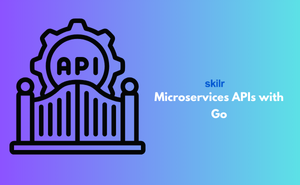👇 CELEBRATE CLOUD SECURITY DAY 👇
00
HOURS
00
MINUTES
00
SECONDS

The Microservices APIs with Go certification assess you on how to develop modern software systems by splitting applications into smaller, manageable services. Each service does a specific job, but together they form a complete and powerful solution. Go is chosen because of its speed, simplicity, and ability to handle high-performance applications, making it a perfect fit for microservices.
This program equips learners with the knowledge to design and implement APIs that connect these services, ensuring smooth communication and reliability. Candidates also gain insights into securing APIs, managing data, and building scalable systems. With these skills, professionals are prepared to meet the demands of today’s cloud-based and distributed applications.
This exam is ideal for:
Industry-endorsed certificates to strengthen your career profile.
Start learning immediately with digital materials, no delays.
Practice until you’re fully confident, at no additional charge.
Study anytime, anywhere, on laptop, tablet, or smartphone.
Courses and practice exams developed by qualified professionals.
Support available round the clock whenever you need help.
Easy-to-follow content with practice exams and assessments.
Join a global community of professionals advancing their skills.
Yes, deploying microservices to cloud platforms is covered.
Backend developer, Go developer, DevOps engineer, and cloud engineer.
Yes, you’ll gain hands-on knowledge to create deployable systems.
Yes, containerization and orchestration with Kubernetes are included.
Yes, including authentication, authorization, and token-based systems.
Yes, it starts with basics and gradually advances to complex topics.
IT, finance, e-commerce, cloud services, healthcare, and more.
Go is fast, simple, and excellent for building scalable, concurrent systems.
Basic programming knowledge helps, but Go fundamentals are covered.
Small, independent services that work together to form a complete application.